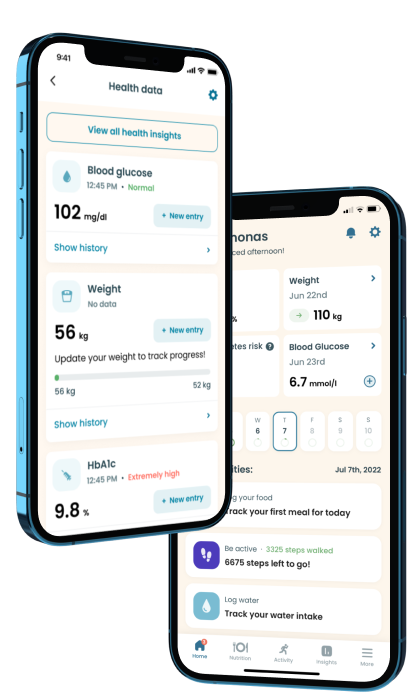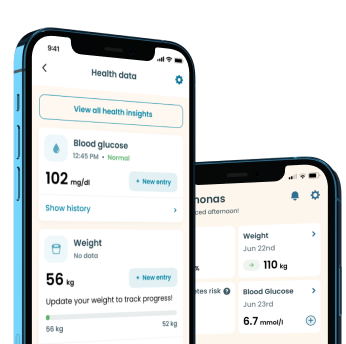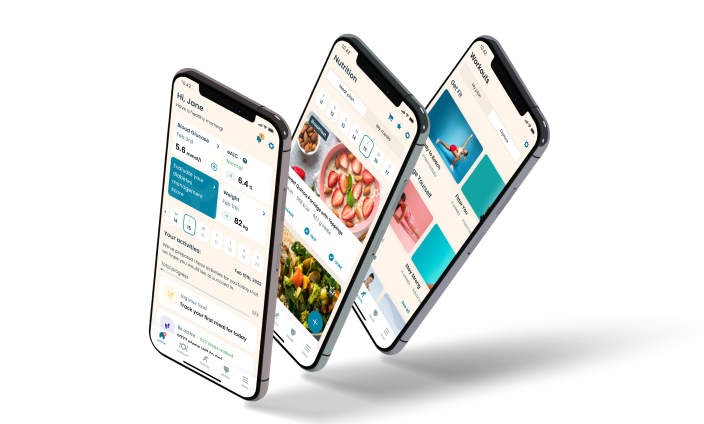Goat Meat and Diabetes

It's ok
0
109 kcal
Red meat has long been considered unhealthy for people with diabetes. However, when most people think of red meat, they typically picture beef, notorious for blood sugar spikes. This bias usually leaves diabetics extremely careful about including meat in their diet.
There’s no doubt that beef has many dangers for people with diabetes as it’s high in calories, cholesterol, and fat — three nutrients that can have deleterious effects on a diabetic’s health when consumed in excess. However, beef isn’t the only type of red meat.
Goat meat, for example, is a very popular type of red meat, and it’s quite different from beef and most types of red meats in nutrients. Goat meat is lean meat that’s supposedly great for people with diabetes.
However, this basic understanding of goat meat does not give it an automatic pass into a diabetic diet. Therefore, this article will comprehensively consider goat meat, its nutritional value, and its role for diabetic patients.
Nutritional value
- Protein 20.6 g
- Carbohydrate 0 g
- Fat 2.31 g
- Fiber 0 g
- Sugar 0 g
- Cholesterol 57 g
The Basics of Goat Meat
Goat meat is one of the red meats with a nutritional value close to white meat and is generally considered healthy and safe. While goat meat isn’t exactly as popular as shaved meat and chipped beef in the west, it’s well appreciated and consumed as a staple source of meat in the Middle East, Caribbean, and Asia.
Goat meat has some advantages over other types of meat — it’s more appreciated and eaten across cultural lines, unlike other meat associated with taboos and cultural limitations.
Kid goat flesh is much more tender than the adult goat and is the leaner of the two. The flesh is still soft and easily passes as fresh or frozen cod. It has higher water content and is prepared with a couple of meals. On the other hand, chevon (meat from the adult goat) is significantly tougher and requires that people cook it for a while to bring out its flavor.
There are different goat breeds. However, they all contain similar nutrients when consumed for food. Some breeds produce healthy milk, while some are meant for consumption. The different breeds of the popular meat include the Spanish, Brush, and Boer varieties.
Goat meat is considered by many as arguably the healthiest red meat to consume. The meat is generally low in cholesterol and saturated fat — two highly unhealthy nutrients for people with high blood sugar and diabetes. What’s more, it’s rich in iron and provides several vitamins and nutrients that many white and red meats fall short on.
For its taste, goat meat has an incredibly strong flavor and is generally considered a sweeter option than lambs. However, many people prefer beef to it. When cooked right—under low heat for a significant period—goat meat can be very enjoyable.
Goat meat is generally consumed when the goat is still a kid or as chevon. The latter is often called capretto and implies meat from young goats (kids), not more than 4 months. Chevon is the adult goat and refers to animals over a year old and up to 14 months.
Take a quiz
Discover what Klinio app can do for you
Healthy diabetes meal plan crafted just for YOU

Personalized workouts with no equipment needed

Track your progress with smart tracking tools

The Nutritional Value of Goat Meat
Goat meat is categorized under lean meat and has significantly less fat than chicken, beef, lamb, and pork on equal serving. Its cholesterol content is very low, reducing the chances of developing cardiovascular complications in people that consume it.
Compared to other types of meat, goat meat is low in fat and doesn’t pose as much risk as most popular options. More importantly, goat meat has a lower calorie level than lamb, pork, beef, and chicken. A serving of 85 g contains only 2.6 g of fat and about 122 calories.
A full nutritional value of an 85-gram serving of goat meat nutrition is outlined below:
| Nutrient | Value |
| Calories | 122 |
| Protein | 23 g |
| Fat | 2.6 g |
| Saturated Fats | 0.8 g |
| Carbs | 0 g |
| Sugar | 0 g |
| Fiber | 0 g |
| Riboflavin | 30% DV |
| Iron | 18% DV |
| Vitamin B12 | 17% DV |
| Zinc | 30% DV |
| Potassium | 10% DV |
Goat meat can be considered a healthy addition to meals for health benefits based on the above nutritional value. A person doesn’t necessarily need to consume this much at once. So in most cases, they’re likely to have these nutrients in decently safe amounts.
Health Benefits of Goat Meat
We’ve already pointed out how goat meat is low in undesirable nutrients and rich in beneficial ones. However, this section goes into more detail about how these characteristics benefit our health in general.
An Excellent Source of Calcium, Potassium, and Protein
Goat meat is rich in protein, with an 85-g serving offering as much as 23 g of protein. Protein barely has any health consequences, and since goat meat is one of the few red types of meat that has it in abundance, it’s always a great inclusion in our diet.
Additionally, goat meat is rich in potassium and calcium, which contribute to the healthy sustenance of the human body. Some of the popular potassium benefits include regulating fluid balance and nerve signals, while calcium is primarily concerned with building and maintaining strong bones.
A 100-g serving of goat meat contains about 385 mg of potassium. In comparison, the same quantity of beef contains 316 mg of potassium, and chicken of a similar serving size contains only 223 mg.
Rich in Iron and Vitamin
A major benefit of goat meat is its high iron content. Goat meat contains twice as much iron as beef; this means it’s one of those iron sources you don’t need to consume in copious amounts to gain benefits.
A single 85-g serving of goat meat contains 3.3 mg of iron, which is higher than beef and chicken. Iron is beneficial in many ways, including body temperature regulation, immune support, and energy production.
Goat meat also contains important vitamins, including vitamin B6 and vitamin B12, which are critical to the optimal functioning of the heart and nervous system. Both vitamins contribute greatly to the human body processes, including DNA synthesis, nerve cell function, and red blood cell formation.
Low Saturated Fat and Sodium Content
Generally, fat in food is not bad as long as you don’t consume more than necessary. Saturated fat is one of the unhealthy fats to consume due to its association with weight and the underlying belief that it could trigger other diseases and undesired conditions.
Goat meat is extremely low in all kinds of fats. The meager quantity of fat present in this meat is majorly good fats that the body needs. So goat meat works well with people who are looking to shed weight.
An 85-gram goat meat serving has less than 1 gram of saturated fat, making it more desirable than most meats. Why’s that? Saturated fat has been highly linked to bad cholesterol increases, and experts generally advise that people avoid it.
Goat meat is also low in sodium and ideal for people who want to cut down on their sodium intake.
Goat Meat and Diabetes
For many diabetic patients, the goal is to keep their blood sugar level at the normal range to prevent triggering other worse complications that could permanently harm their health. The best way to prevent blood sugar rise is to successfully reduce cholesterol and sugar concentration in meals.
Also, a significant decrease in saturated fat is vital. Surprisingly, goat meat ticks most, if not all, of these boxes.
With the different health benefits associated with goat meat, it’s clear that diabetics will easily find goat meat healthy for diet inclusion, and expert research supports this claim. For example, the American Diabetes of Association lists lean meat as the best type of meat to go for. Goats are one of the choicest lean meats, and as such, diabetics will find joy opting for them compared to other red meats.
The Food and Safety Inspection Services (FSIS) classification of goat meat as lean meat only confirms its friendliness to blood sugar. The institution stated the different ways one can eat goat meat.
Diabetic patients should consider cooking and boiling in low heat as opposed to frying. You can store goat meat remnants in a refrigerator or microwave. However, once taken out, you should ensure you consume them within 24 hours for the best benefits.
Based on the benefits of goat meat, there’s no doubt that diabetes can add it to their diet. However, consumption must be moderate to avoid stuffing in too many calories as you’re also likely to obtain calories from other food.
Possible Downsides of Consuming Goat Meat
While it may seem like goat meat is a king among red meat options, it does have some ugly sides. Here are some of the most prominent ones.
Possible Red Meat Relationship to Cancer
While goat meat has superior nutritional value to many red and white meats, it’s still red meat in the end.
For years, there’s been a correlation between cancer and red meat intake. However, a causation effect hasn’t been established; as such, we can’t comprehensively state that red meat causes cancer. Nonetheless, the possibility still lingers.
One way diabetic patients can get the best of goat meat and not increase the chance of developing a disease is by reducing processed meat consumption. Fresh meat will always be a better option as it’s safer and doesn’t have any chemical effect.
Taste Factor
Generally, goat meat doesn’t taste bad. However, it’s significantly less tasty than chicken, turkey, and beef, so it might not come across as enjoyable as any of these meats. The taste is one of the reasons it’s not so popular among western households.
Other Blood Sugar Regulating Friendly Steps to Adopt as a Diabetic
Apart from opting for fresh goat meat over-processed options and limiting your overall red meat intake, there are other means of regulating your overall blood sugar levels as a diabetic patient. The following sections throw more light on these.
Include Other Variations of Safe Meats in Your Diet
Goat meat is one of the best very lean meat choices; as such, there are very few red meats that can compare to it. However, keeping up with the same type of meat and taste for long can be tiring, so considering good red meats can help.
There are several red meat variations that diabetics can go for, including boiled ham and flank steak. However, it’s important you eat them with discretion as excessive intake negatively affects diabetic patients' blood sugar. Other additions such as hot dogs, tuna fresh, and turkey ham egg whites are also great options when eaten in moderation.
Exercise Regularly
Regular exercise helps promote insulin sensitivity and uses the blood sugar in your body as fuel due to continuous muscle movement. This, therefore, leads to an overall healthy reduction in your blood sugar level.
However, as a person with diabetes, it’s important that you routinely check your blood sugar before starting or after finishing an exercise routine to preclude the risk of developing low blood sugar levels.
The following exercise helps control blood sugar levels:
- Running
- Jogging
- Dancing
- Biking
- Brisk walking
- Weight lifting
- Swimming
- Hiking
Apart from keeping your blood sugar level in check, these exercises also reduce your dependence on medications. You can choose any of them as they vary in intensity.
Even if you opt for just brisk walking, you’re sure to experience important changes in your blood sugar in the long run. Generally, any type of exercise that requires you to move even without much intensity is better than sitting all day or being inactive.
Avoid Eating Late at Night
One of the key highlights of the 2021 Endocrine Society meeting (ENDO 2021) was a study suggesting that people who eat before 8:30 a.m have less resistance to insulin and lower blood sugar levels, which could be great for people with type 2 diabetes.
Namely, the study led by Mariam Ali, M.D., of Northwestern University Chicago, discovered that people who eat earlier daily are likely to have less resistance to insulin. They may also experience a reduction in their blood sugar level regardless of whether their daily food intake was delayed to less than 10 hours or spread over 13 hours+. This shows that apart from the type of food we eat, the time we eat can affect our health.
Conclusion
Goat meat doesn’t increase blood glucose levels, and it being almost fat-free makes it a preferred option for people looking to lose weight. That said, it’s a good addition to a diabetic diet and, when eaten moderately, can provide a vast amount of protein with almost zero downsides.
With that out of the way, it’s important to properly plan a meal that incorporates goat meat to avoid creating an imbalance. Using a diabetes meal planner, like Klinio, can help you include the right food at the right time to ensure that your blood sugar is always under control. This virtual health assistant also allows you to incorporate workout sessions into your daily routine and helps you monitor your weight loss progress over time.

Download Klinio app!
Get more by downloading our free Klinio App. Analyze your health, form new habits and manage your diabetes anytime, anywhere.
OR
SCAN QR CODE



GET THE APP


